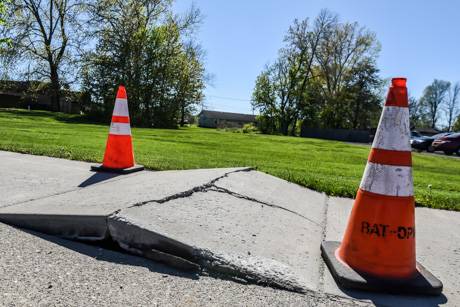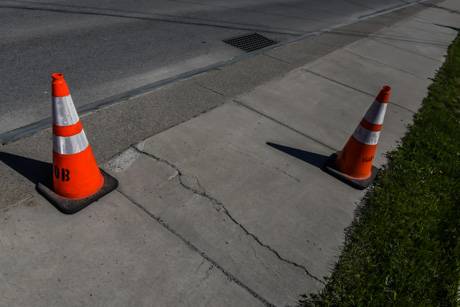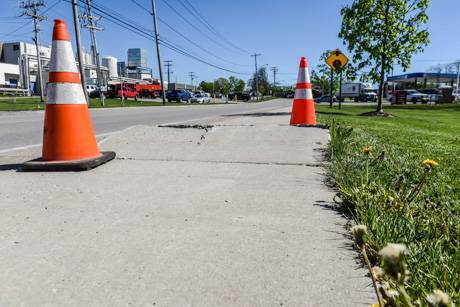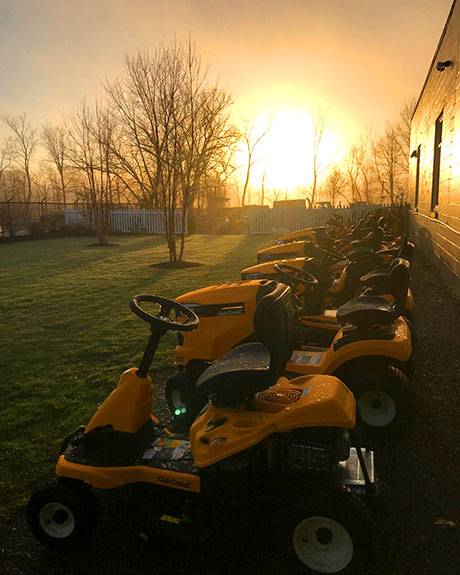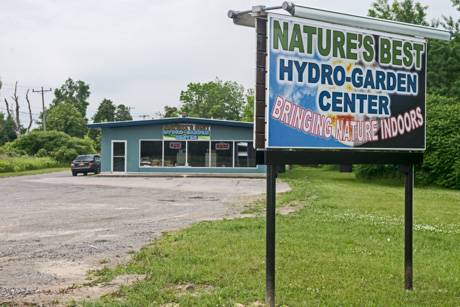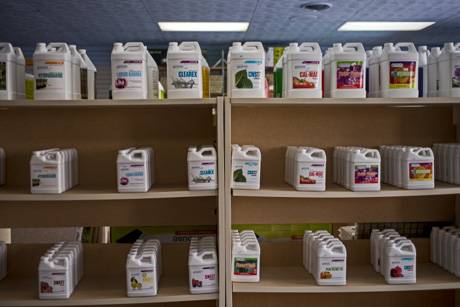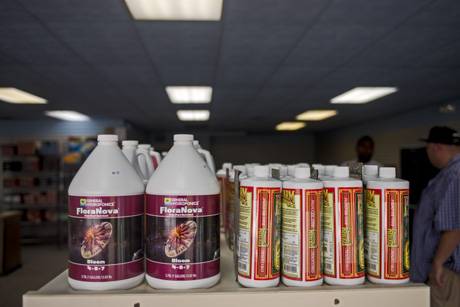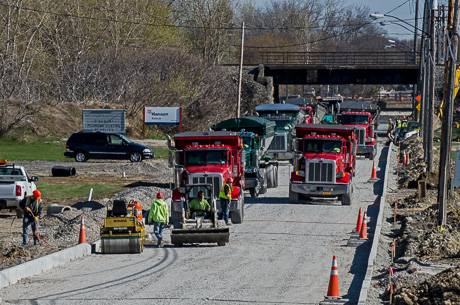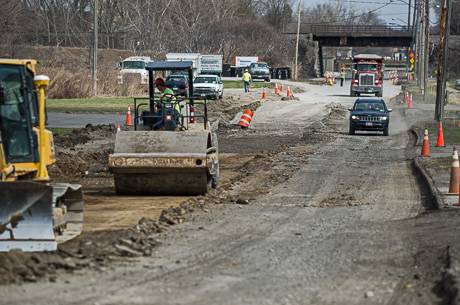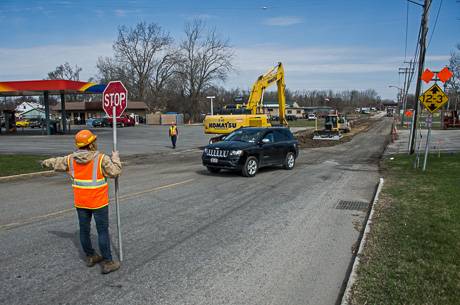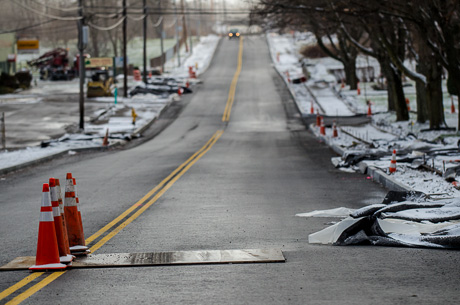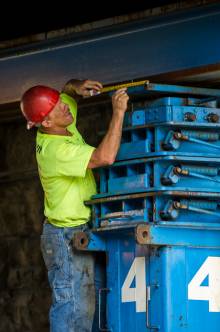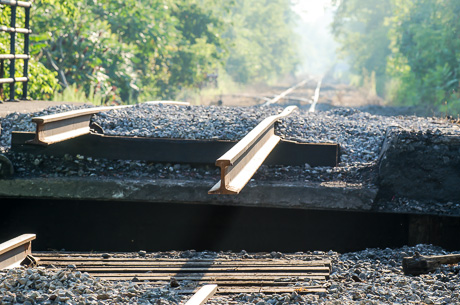
Lifting a 255 ton bridge is just as much work as it sounds.
A team of workers put in more than 12 hours yesterday lifting the Genesee Valley Transportation bridge that runs over the south end of Cedar Street -- the ones the trucks always hit -- exactly 36 inches.
Lifting the bridge took a mere 20 minutes. All of the other hours went into getting the hydraulic lifts -- called gantry lifts -- precisely into the their proper locations.
Raising the bridge is part of the Cedar Street reconstruction project. When the project is done, the bridge will provide a clearance of 14' 3" for trucks to pass under.
That's a foot higher than the former height and two feet higher than the sign on the bridge indicated.
The iron bridge was built some time around 1918 for the Lehigh Valley Railroad (the same rail line involved in that train derailment in Le Roy in 1970). It's the last of Lehigh's old line that's still operational. It's just a spur off the main CSX line and is used by GVT to move freight for Chapin Industries.
Rail cars are moved on the line only once every three weeks, meaning the window for lifting the bridge and putting it back in its new place is three weeks.
Yesterday, a crew of five men lifted the bridge.
Watching them do the bulk of the actual labor over a four-hour period was much like watching a well-practiced basketball team weave in and out of a triangle offense.
Few words were spoken and even fewer commands given. Each member of the team knew where he was supposed to be and when and what he was supposed to do.
You would think these men had worked together for years.
That isn't even close to the case said Kevin Seely, project manager for Tonawanda-based Hohl Industrial. It's quite possible this is the first time all five men worked together on the same project at the same time. Only two of the team members had much actual experience together.
That's one advantage, Seely said, of union labor. The workers who are hired for a job already know exactly what they're supposed to do.
All the men -- Seely, Carl Larson, Adam Swanson, Chris Wells and Fred Howry -- told stories of working on bridge lifts all over Western New York, including bigger bridges in Buffalo, bridges that had to be lifted half at a time in Corning, and a bridge in Lockport that was lifted, floated down the canal, turned around and put back in place.
It's not exceptionally dangerous work -- no more so than another other construction work -- but it is work, the kind of work that leaves a man tired, sweaty and grease-and-grime-covered.
It's also precision work.
When you're talking about lifting 255 tons of old iron (weighing a bit less than two jumbo jets), you better make sure the load balances properly. There's little margin for error.
Work started in the morning with laying the rail bed for the gantry lifts. Those had to be perfectly level. Then the lifts were rolled into place. Each of the four lifts -- which are rated for 113 tons each -- had to be measured and placed precisely under the bridge's beams.
Next, two steel beams weighing a few tons each had to be swung into place. Well, swung is too strong of a word. It took an hour for each beam to be meticulously moved onto the lifts, measured, moved, and bolted down exactly where engineers determined they should be placed.
Once in place, hydraulic lines were connected to the lifts and to a control panel so an operator could guide each lift up simultaneously. One lift going up too fast could throw off the load balance.
Before the lift, Howry cut off the dozen or so bolts that were tightened in place more than 100 years ago to anchor the bridge to its rock and cement base.
When workers were ready to start the lift, each jack only went up one inch while other members of the team checked to make sure each of the four corners of the bridge were clearing the base and lined up evenly. Howry thought the second jack needed to come up another half inch, so it was raised to keep everything level.
In looking for a quote about how carefully the operation proceeded, we asked Seely about the process and it put it in pretty obvious terms: "We don't want to drop it or have anything catastrophic happen."
Larson operated the control panel. He then lifted the bridge another 11 inches. It didn't make a sound. No dust or sparks flew. The movement of the bridge was almost imperceptible.
Workers again checked measurements. The bridge had come up with no more than a 1/4-inch variance on any lift.
Larson then started the to lift again, bringing up the bridge to its final 36 inches above its previous location.
The extra space will give construction crews room to operate to build the new seat for the bridge.
Dick Kraft, resident engineer for Erdman Anthony, said high-capacity concrete -- rated for 3,000 psi -- will be poured for a new bridge seat, allowed to cure, and then more concrete will be poured as a new back wall. Once that's cured, the bridge can be lowered to its new seat. And then Chapin can start moving shipments again.
If any of the workers wish to obtain prints of these photos, they can be purchased by following this link.
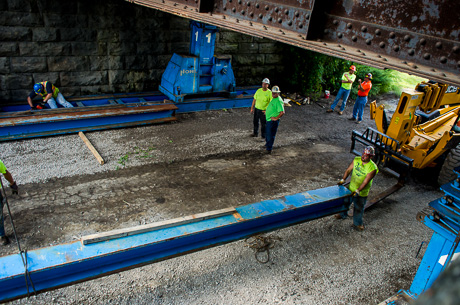
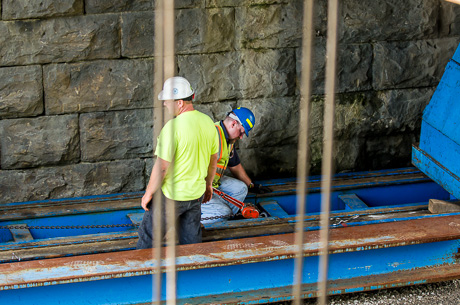
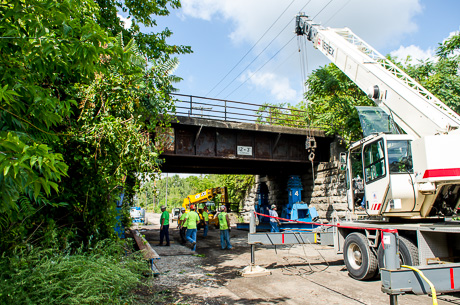
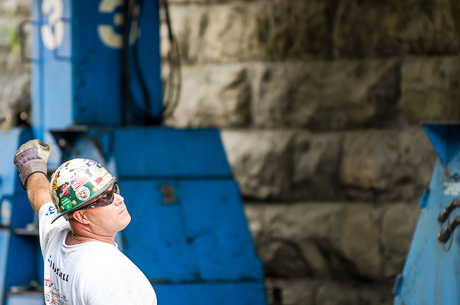
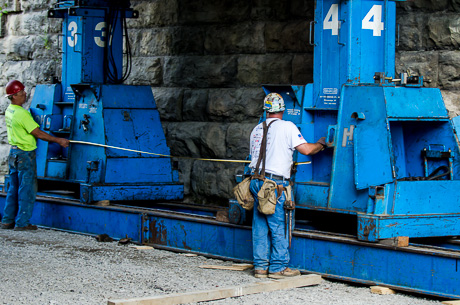
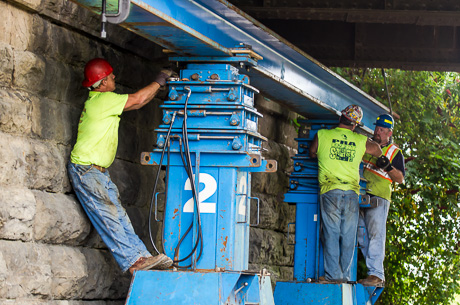
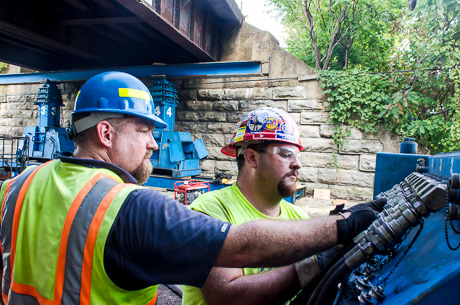
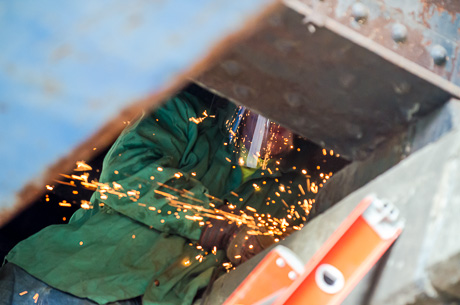
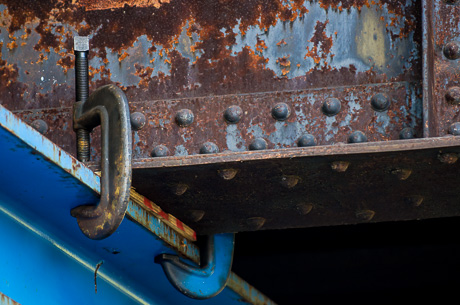
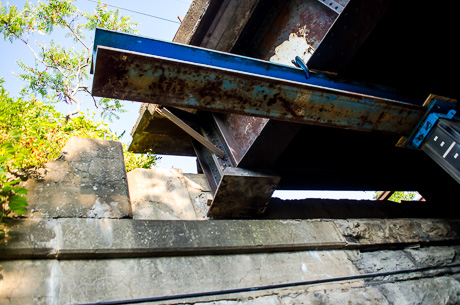
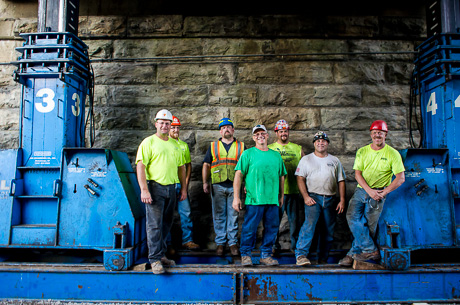
A few of the people involved in Wednesday's operation left before we could do a group picture, but pictured are, from left, Craig Stachowiak, Zoladz Construction, Tom Langiewicz, also with Zoladz, Kevin Seely of Hohl Industrial, Carl Larson, a resident of Boston, Adam Swanson, from Greece and with Iron Workers Local #33, Chris Wells, from Cattaraugus, and Fred Howry, Local #6 and from West Valley.
There's a couple of dozen more photos in the slide show and you can expand them to full screen.
